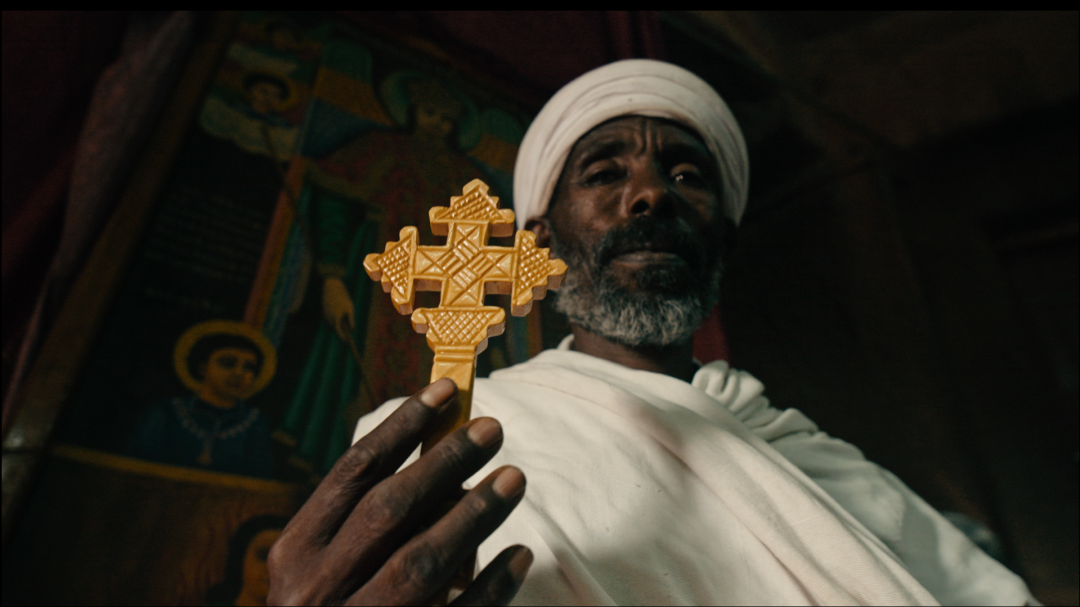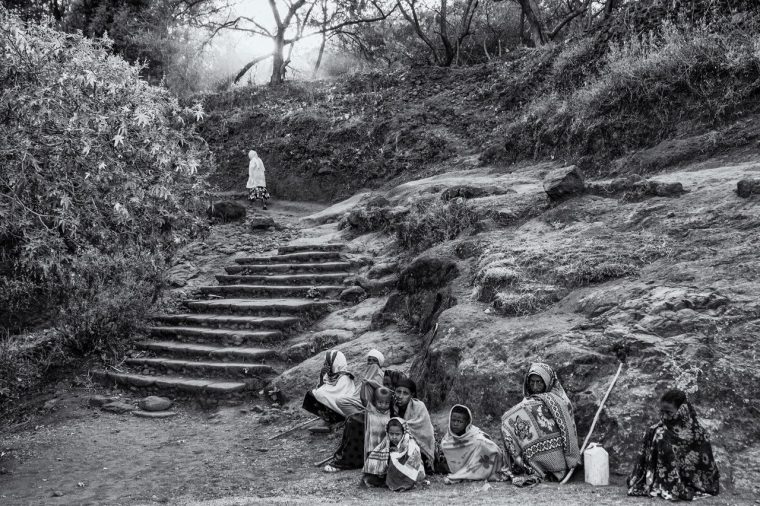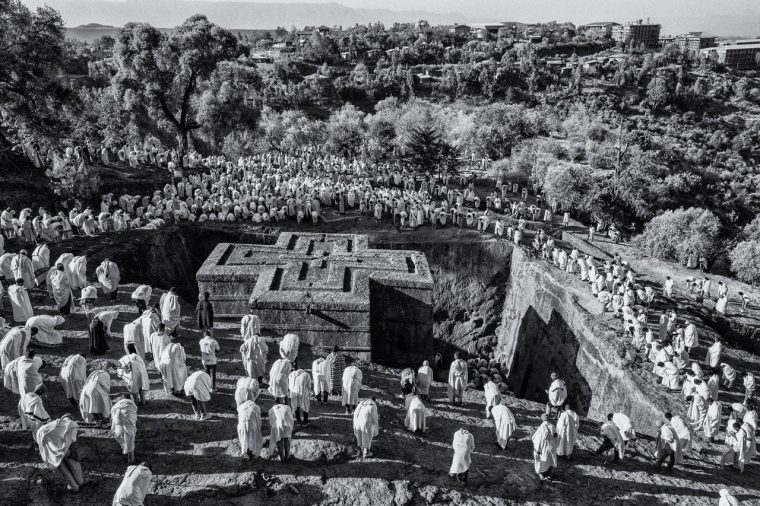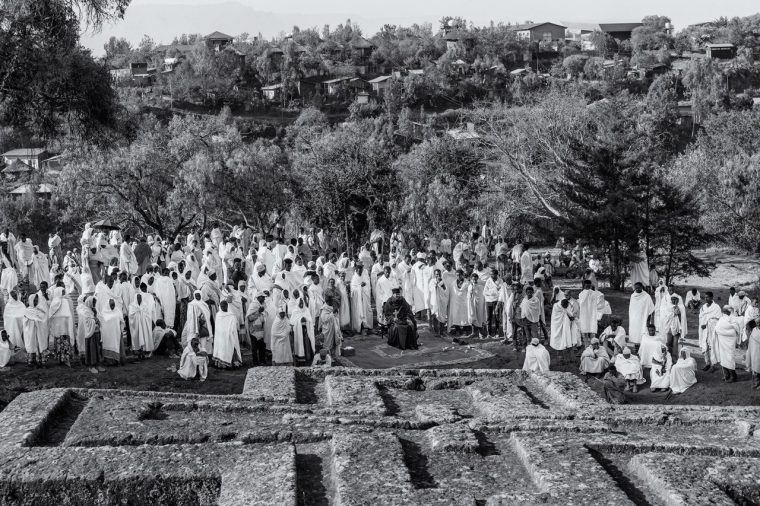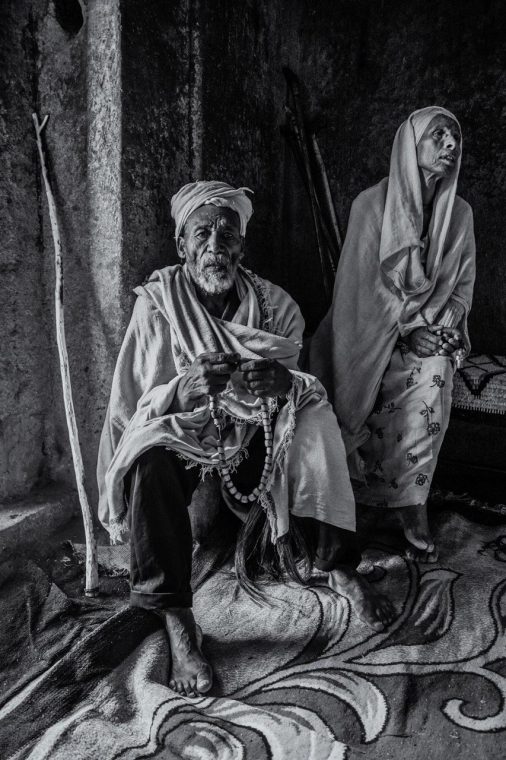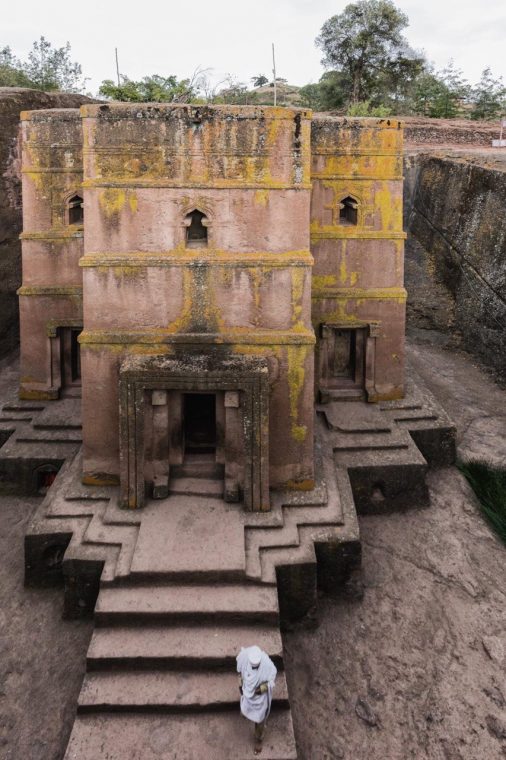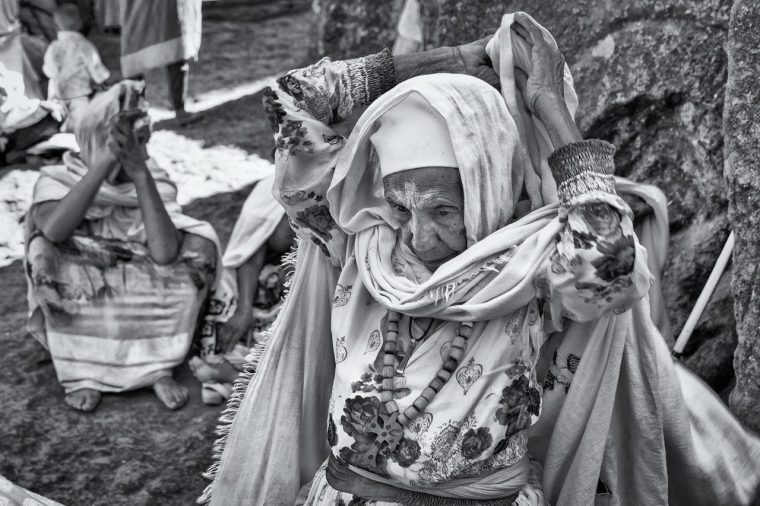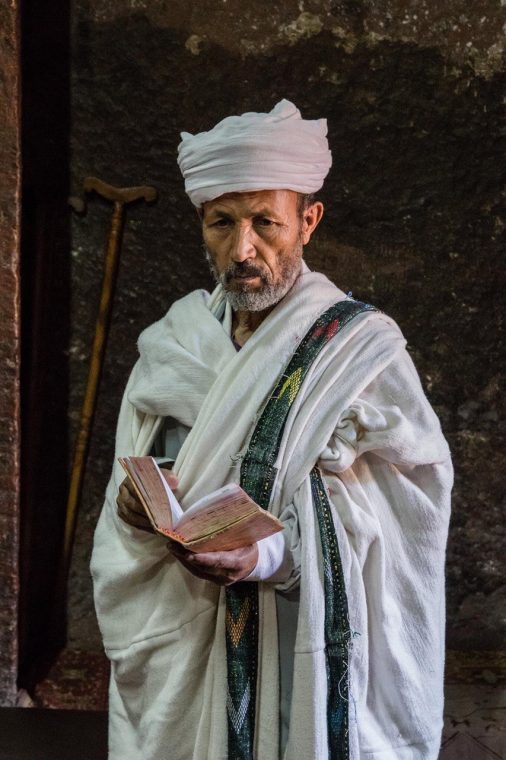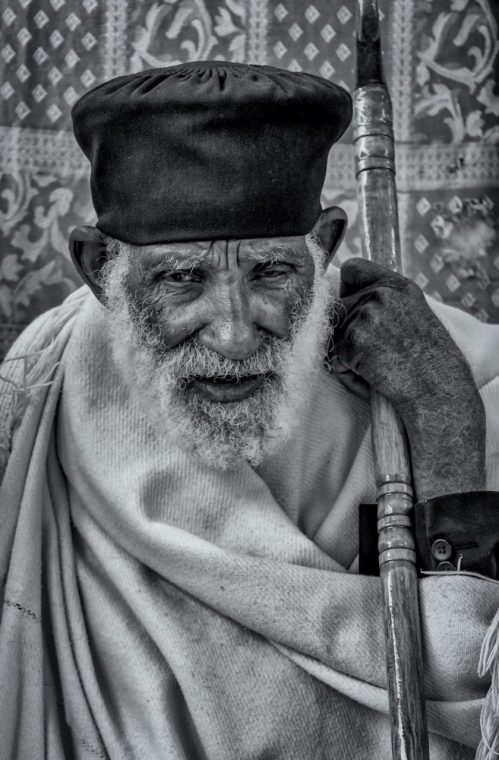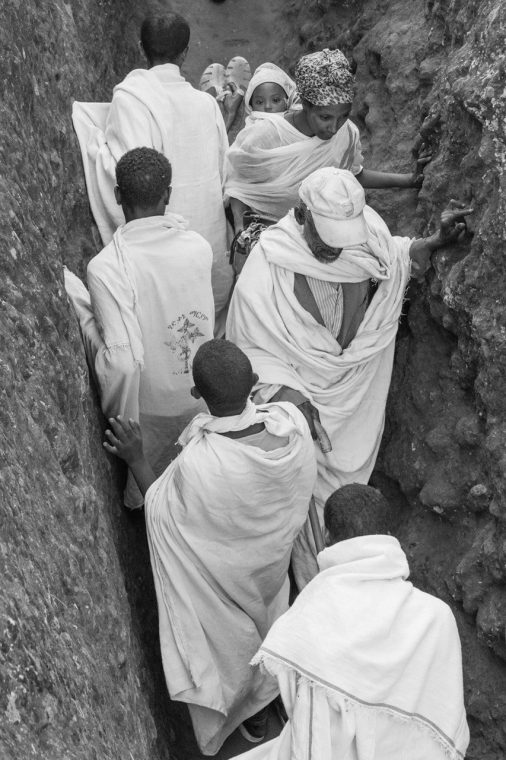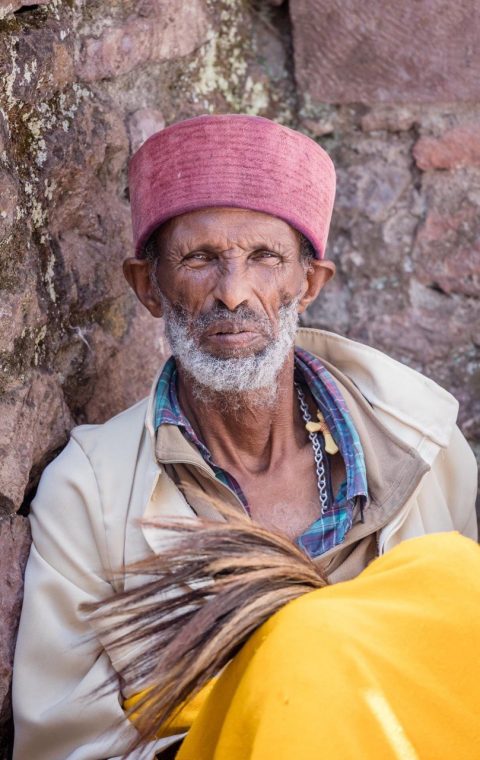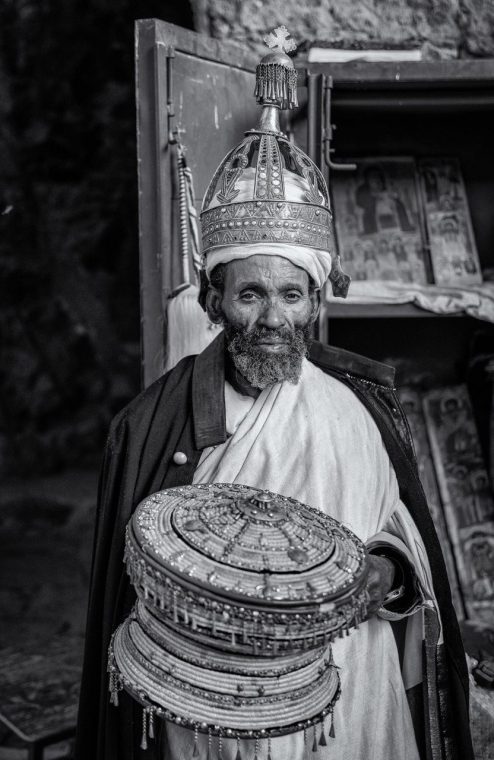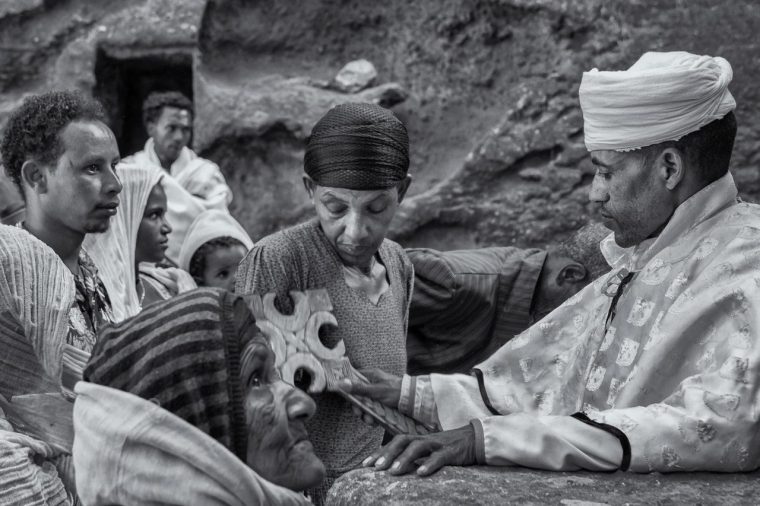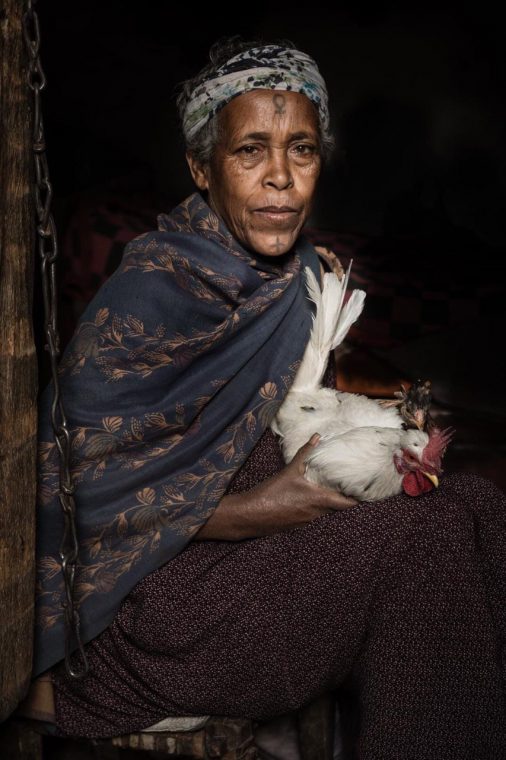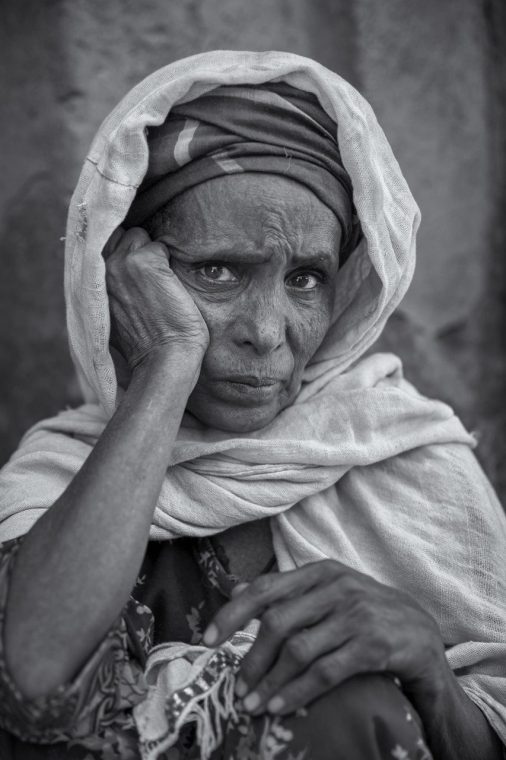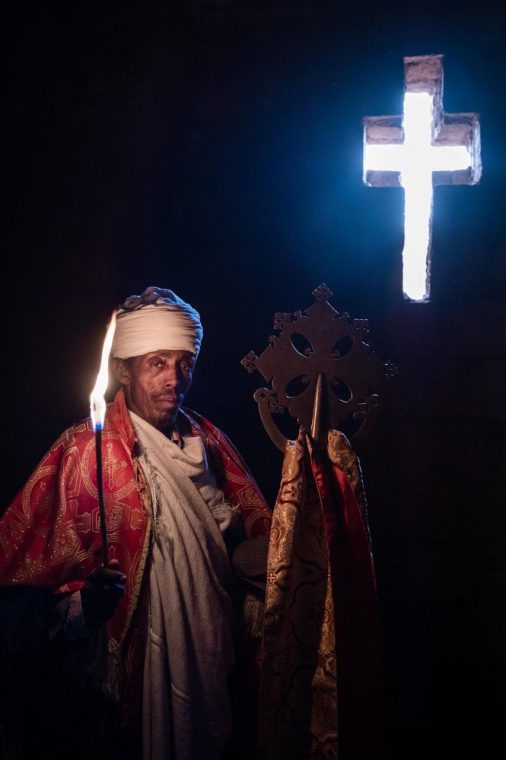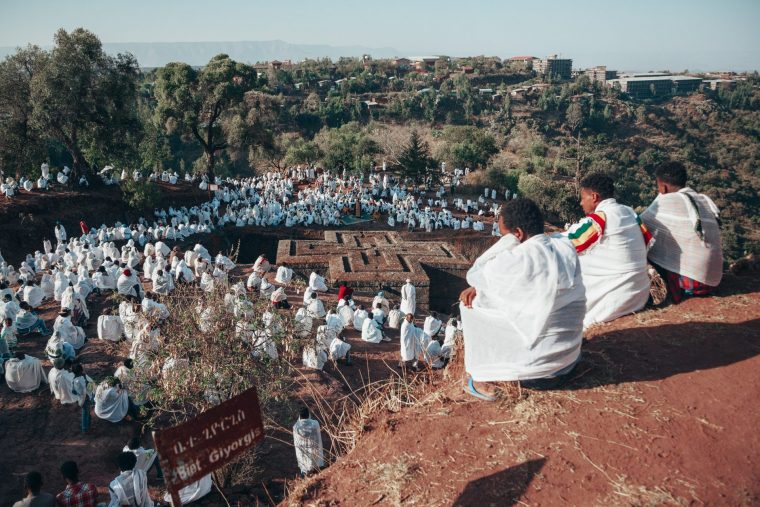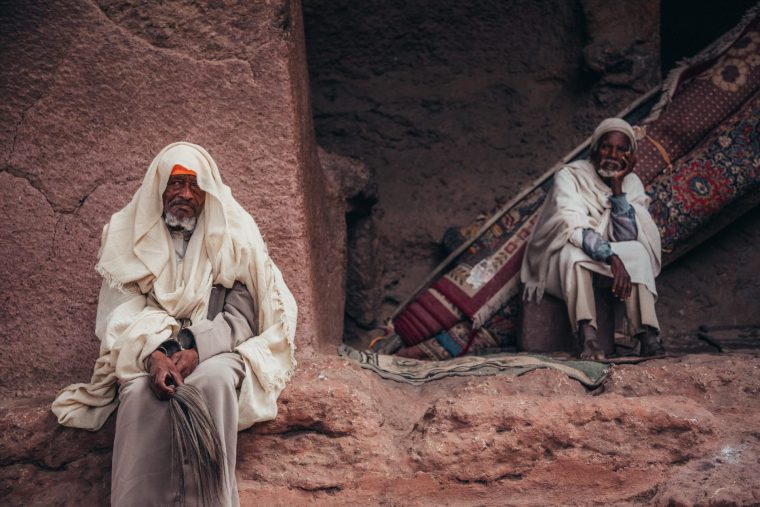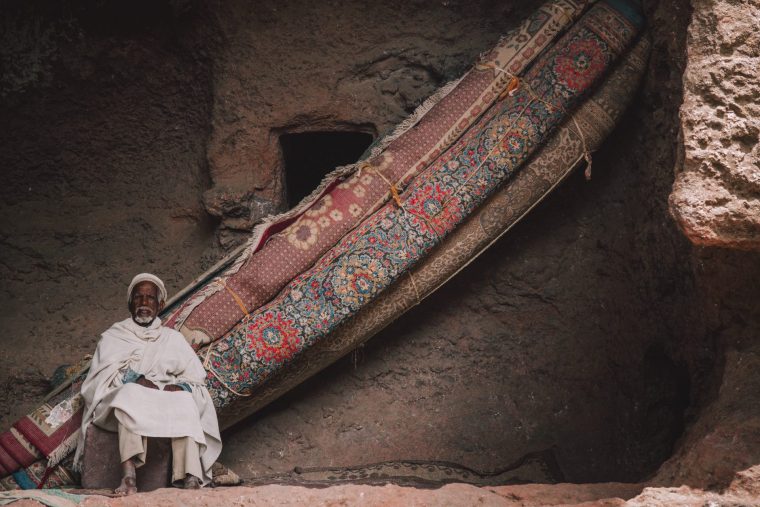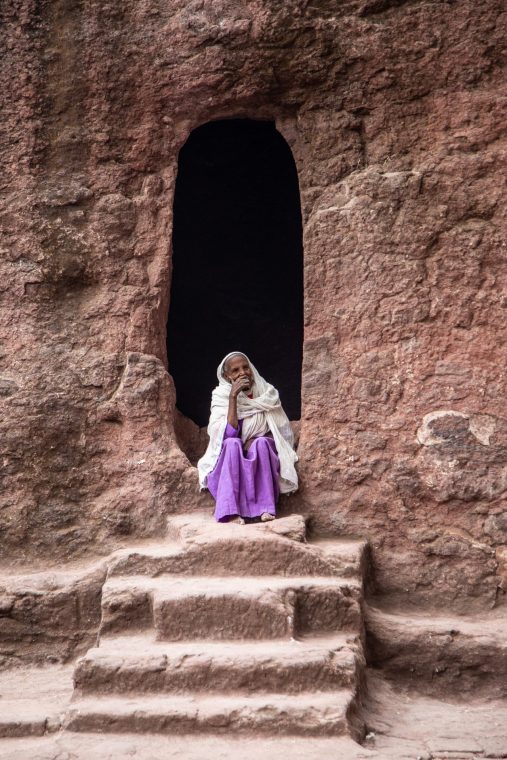According to a legend, when King Lalibela was born, a swarm of bees surrounded his defenseless body without causing him any harm, as a symbol that he was destined for divinity. At that moment his mother exclaimed “The bees know that he will be the king!, and she named the newborn Lalibela, which in Agew means “the bees recognize his sovereignty”. Harbav, the older brother of Lalibela, became jealous at the news, and began to fear for the safety of his throne, deciding to assassinate his younger brother, ordering him to be poisoned. Lalibela fell into a mortal sleep, but some angels transported him to heaven where he was able to contemplate an endless number of very unique and divine-looking constructions, which fascinated the little boy. He also met with god, who brought Lalibela back to life on the condition that she build some buildings similar to the ones she had seen in her dream. Harbav, also following divine instructions, abdicated in favor of his younger brother and asked for his forgiveness. When Lalibela was crowned, he had eleven monolithic churches built, which were built in just 11 years. Legends say that the works were completed in such a short time thanks to the contribution of the angels, who continued the work of the builders at night.
The truth is that until today, historians are not able to explain how these churches could be built in monolithic blocks with such surprising mathematical precision for that time, taking into account the means and tools that existed more than 11 centuries ago. Apart from being architecturally unique, these churches have been used as places of worship for centuries. It is the main place of pilgrimage for Ethiopian Christians from all over the country. In fact, for the construction of the sanctuary, its promoters were inspired by the buildings of the city of Jerusalem, at the time when the population of Lalibela was in the hands of the Muslims (Saladin, 1189)
Inside the churches, a tripartite division drawn by pillars is observed, and pieces from the early days of Ethiopian Christian art are preserved, such as sculptures, beautiful wall paintings, royal clothes, manuscript scrolls, bronze and gold crosses and many others. priceless antiques. The walls are adorned with magnificent paintings in Byzantine style, geometric or with scenes from the Bible. To go from one church to another you have to go through open tunnels. (Information taken from the book ETHIOPIA by Denberu Mekonnen)
Personally, of all the trips I have made to Africa, this has been the most impressive. Seeing these incredible and mysterious monuments has been like traveling to the past and feeling that time has stopped. I was able to understand human beings a little better, how really simple we are, because there are times when certain traditions remain impeccable over time because we really don’t need much more than a few beliefs to move forward, whether they are religious or not, because this sanctuary It was not only visited by Christians, but also by people who need to meet with the energy that these temples give off, because you could really feel as if you were in a piece of heaven. Without a doubt, Africa is never what it seems, and the idea and concept that we have of it is highly conditioned by how Western culture makes us see this continent. Currently, Lalibela is in a difficult situation, since in August 2021 it was invaded by the Tigray rebels, causing the population to flee to other regions. Currently, it is a forgotten war, and the difficult geographical and political situation of this area makes it very difficult for humanitarian aid to arrive.
Used Film Gear
Lumix GH5s
Canon 5D Mark II
GoPro Hero 7
OsmoPocket
Irix 15 mm, Canon 24-105 mm, Sigma 35 mm, adaptador Metabone.
Editado en Davinci Resolve.
The photographs have been taken by me and my Father

